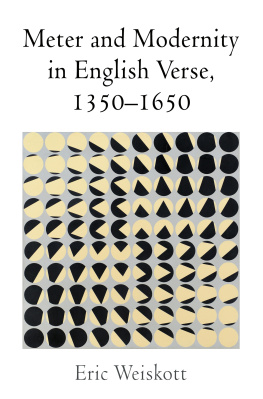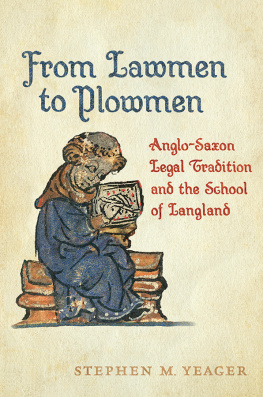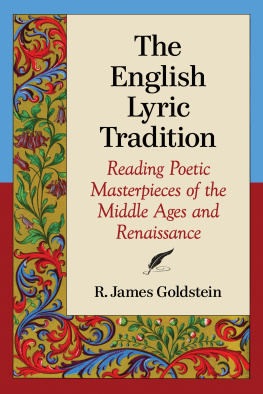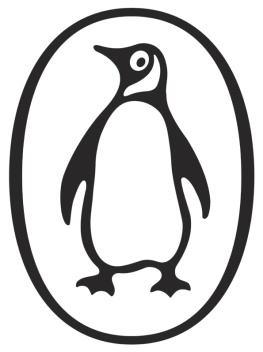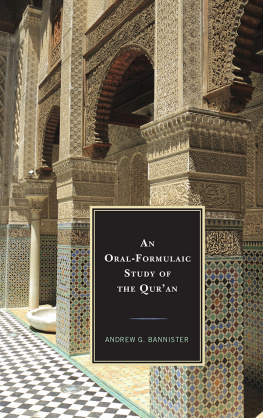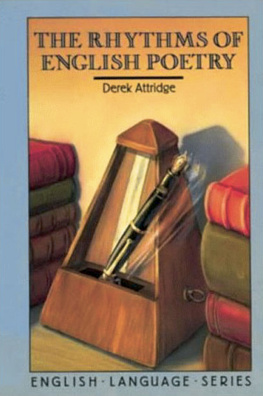AUTHORS, AUDIENCES, AND OLD ENGLISH VERSE
Authors, Audiences, and Old English Verse
THOMAS A. BREDEHOFT
University of Toronto Press Incorporated 2009
Toronto Buffalo London
www.utppublishing.com
Printed in Canada
ISBN 978-0-8020-9945-7
Printed on acid-free, 100% post-consumer recycled paper with vegetable-based inks.
Library and Archives Canada Cataloguing in Publication
Bredehoft, Thomas A.
Authors, audiences, and Old English verse / Thomas A. Bredehoft.
(Toronto Anglo-Saxon series)
Includes bibliographical references and index.
ISBN 978-0-8020-9945-7 (bound)
1. English poetry Old English, ca. 4501100 History and criticism.
2. English language Old English, ca. 4501100 Versification. I. Title.
II. Series: Toronto Anglo-saxon series
PE257.B72 2009 829.1009 C2009-902894-8
University of Toronto Press gratefully acknowledges the financial assistance of the Centre for Medieval Studies, University of Toronto, in the publication of this book.
University of Toronto Press acknowledges the financial assistance to its publishing program of the Canada Council for the Arts and the Ontario Arts Council.
University of Toronto Press acknowledges the financial support for its publishing activities of the Government of Canada through the Book Publishing Industry Development Program (BPIDP).
To the memory of Nick Howe, whose teaching, influence, and advice so literally made it possible.
And to Rosemary Hathaway, whose living influence makes so many other things possible.
Contents
Preface
In ways that might not be immediately obvious, this book is a companion volume to my 2005 book, Early English Metre. In that book, I outlined a new formal analysis for Old English verse, including a detailed metrical description of what I called late Old English verse, a tradition of poetry that differs widely from the classical verse exemplified by Beowulf. Along the way, I argued that a great number of works (specifically, works in lfrics rhythmical, alliterative style) that have been conventionally described as prose are, in fact, formally indistinguishable from late Old English verse. To that extent, Early English Metre was not only a book about metre, but an intervention into our conventional understanding of Old English literary history.
In this book, I set out to extend the work of revising our view of Anglo-Saxon literary history, building not only on my work in Early English Metre but also on some of my recent and forthcoming work on interrelations between Old English and Old Saxon poetry, as well as on recent publications that have identified (for the first time) other passages of unrecognized late Old English verse. Indeed, some texts discussed as poems in this book have not been previously identified as verse. Thus, while I discuss a number of very familiar Old English texts throughout, I also consider a number of Old English texts that readers may not be accustomed to thinking of as poetic, if they have thought about them at all. But again, Old English verse traditions clearly varied across time, and the arguments made in this book reflect my conviction that it is important to consider the whole range of those traditions in all of their complexity. Throughout, where my arguments concern the dates of poems, I attempt to contextualize my arguments by references to current thinking on dating issues, with special attention to R.D. Fulks important A History of OldEnglish Meter, which remains the central authority on questions of poetic dating. Strikingly, although my metrical perspective differs from that used by Fulk, and my arguments look at dating issues in ways quite distinct from Fulks, our conclusions are rarely in conflict.
Nevertheless, one of the observations that drives this book is the recognition that, just as the advent of Sievers-based metrical analysis has led scholars to see only one acceptable form for Old English verse, the arrival of oral-formulaic studies upon the scene has perhaps limited our vision of Old English poetry to a single tradition. Indeed, the two critical trends reinforce one another, with our understanding of Old English poems so dominated by the combination of Sieversian metrics and a presumed oral heritage that works apparently lacking in oral roots (and exhibiting those roots primarily through the traditional diction, formulas, and metre associated with the Sieversian perspective) have been largely excluded from consideration as verse at all. Yet there is no clear Anglo-Saxon basis for the resulting line of demarcation between Old English verse and prose: it is an artefact of our understanding or lack thereof. In the introduction to this book, I begin a reconsideration of the meaning of this boundary line by addressing the ways in which Anglo-Saxons and modern readers have conceptualized the roles of author and audience in relation to written or inscribed Old English verse. Taking Michel Foucaults well-known What Is an Author? essay as a touchstone text, I attempt to trace the relevant dynamics of authorship, anonymity, and audience through a careful consideration of two more or less identifiable moments at which Old English poetry was inscribed: in Bedes famous story of Cdmon and in the two poems authored by Wulfstan the Homilist but presented anonymously in The Anglo-Saxon Chronicle. Together, these two moments remind us of the complexity of how textuality and oral tradition interrelate with surviving Old English poetic texts.
I come at a set of similar issues from a rather different angle in the first chapter. I begin the chapter by examining how concepts of authorship and authority interrelate in the context of the apparent reproducibility of Old English verse in manuscript contexts. It is no accident, I argue, that anonymous poems tend to be those that survive in unique copies, while poems associated with named authors are frequently (although not always) preserved in multiple copies. Such a circumstance suggests just how important the relationship between authority and named authorship was during the Anglo-Saxon period, even in the realm of Old English verse despite some recent scholars claims to the contrary. The second half of the chapter takes up the issue of naming and poetic expression by considering the inscriptional tradition of Old English verse, a tradition of verse expression that is explicitly literate in its orientation and yet which has as much claim to antiquity and cultural importance as the oral-formulaic tradition itself, even if its surviving records are brief and few. In particular, the inscriptional tradition involves a configuration of naming, authority, and formulaic poetic expression that very much helps to place the more familiar tradition of manuscript poems more clearly into its Anglo-Saxon context.
In , I shift my focus to the late ninth century and the court of King Alfred. Building on my recent arguments about the influence of Old Saxon verse in the late ninth century, this chapter begins a reconsideration of the significance of what is usually understood as formulaic evidence, which will also be taken up in later chapters. Specifically, I suggest that while the original composition of many of the anonymous poems cannot be accurately localized, we can trace the origins of some of them, and that we can usefully distinguish between two types of Old English poetic phrases: those that are truly traditional and shared across most or all of the classical poetic tradition, and those that are innovative. For example, Old Saxon formulas that first appear in Old English poetry in Alfredian works should probably be interpreted as not having been a part of the Old English oral-formulaic tradition, but rather as new formulas entering Old english verse through literate processes. Two important conclusions emerge from the evidence presented: first, Alfreds court seems to mark a crucial step in the textualization of Old English poetic composition, including the development of a tradition of what can only be called literate-formulaic composition, and second, the compositional strategies employed by Alfredian poets like Bishop Wulfsige also reveal a number of classical Old English poems that were likely to have been known at Alfreds court, including
Next page

